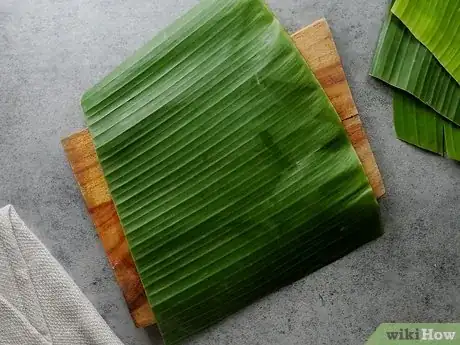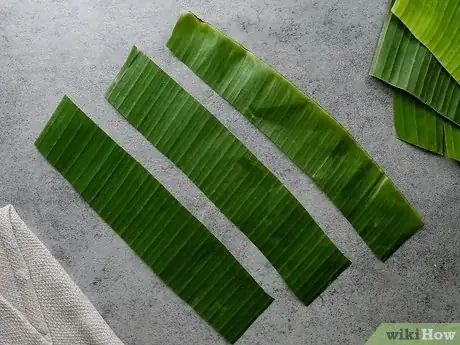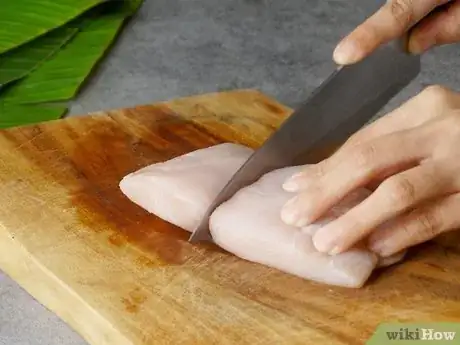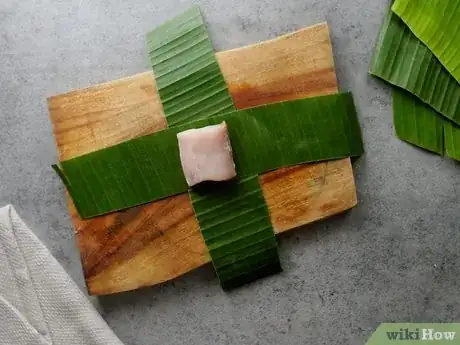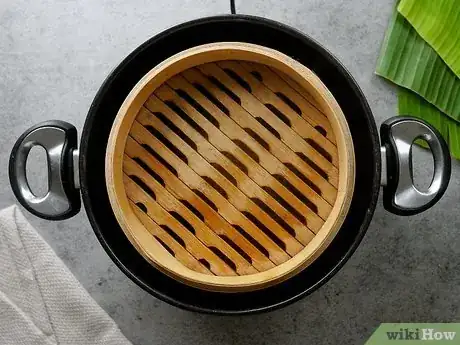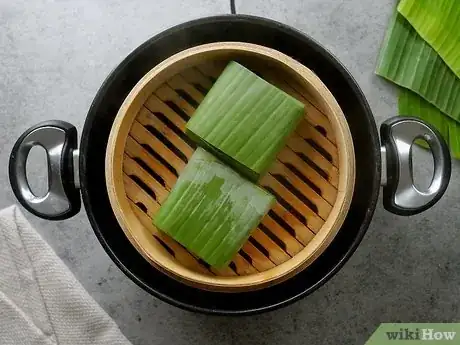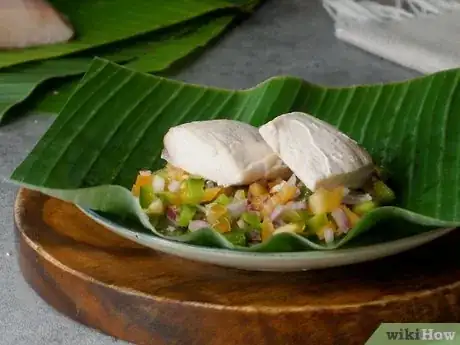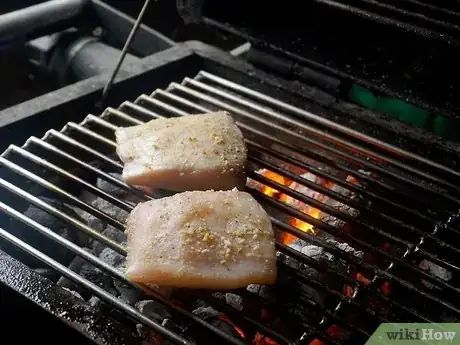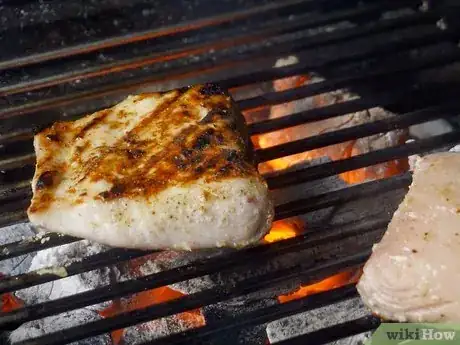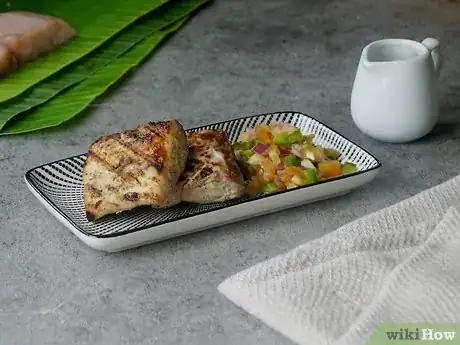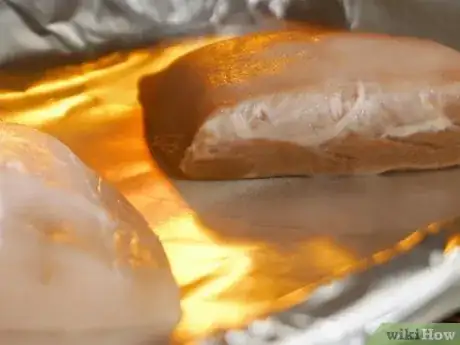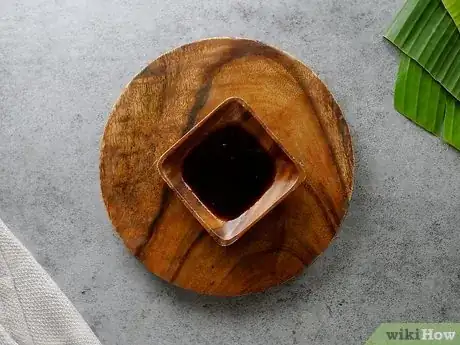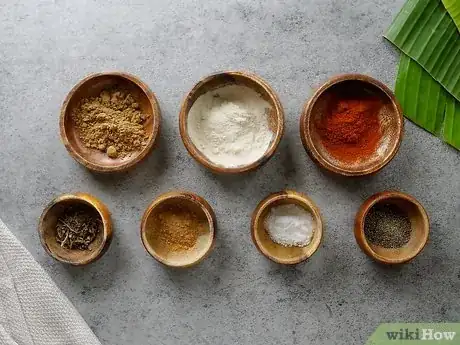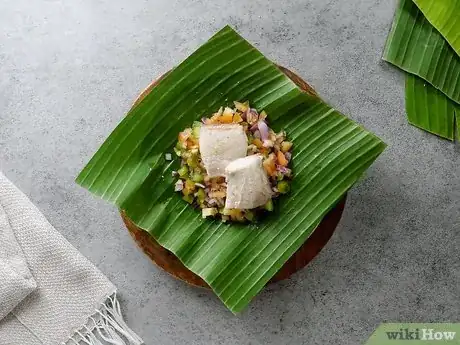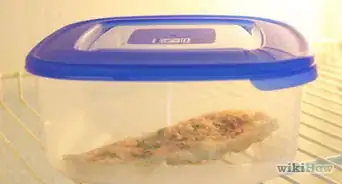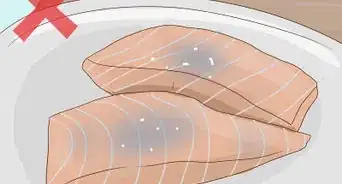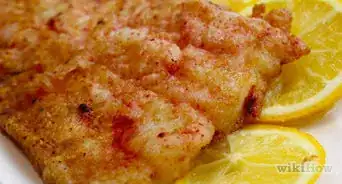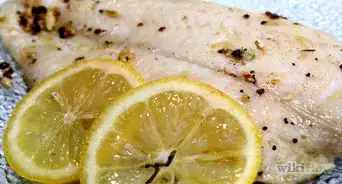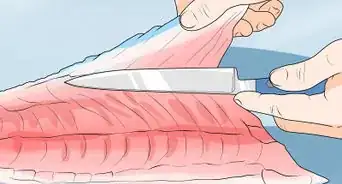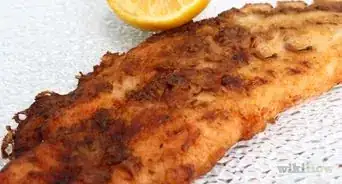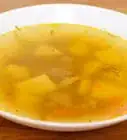This article was co-authored by wikiHow Staff. Our trained team of editors and researchers validate articles for accuracy and comprehensiveness. wikiHow's Content Management Team carefully monitors the work from our editorial staff to ensure that each article is backed by trusted research and meets our high quality standards.
The wikiHow Culinary Team also followed the article's instructions and verified that they work.
This article has been viewed 660,354 times.
Learn more...
Mahi mahi (also called dolphinfish, although they're unrelated to dolphins) is a versatile fish that produces excellent results using just about any cooking method. The mild, sweet flesh, which starts out as pinkish but turns white as it cooks, is very lean but also quite moist and flavorful. When cooked to perfection, mahi mahi's naturally sweet taste makes it an ideal pairing with fresh fruit, herb salsas, salads, and more. This firm white fish is an excellent source of healthy, extra lean protein. It is also low in saturated fat and low in sodium. It is rich in niacin, vitamin B12, phosphorus, and selenium. Mahi mahi also provides about 400 mg of omega-3’s (DHA and EPA) per 4 ounce serving of fresh fish.[1] Try any of the methods in this tutorial to make a delicious meal for yourself or your family and friends.
Steps
Steaming Mahi Mahi
-
1Get some Ti or banana leaves to wrap your mahi mahi. The Ti plant is an evergreen shrub native to Hawaii with smooth blade-shaped leaves measuring about four inches wide and range from one to two feet in length.[2] You can also use banana leaves.
- Wrapping your mahi mahi in leaves helps the fish steam slowly, keeping its juices as it cooks.
- If using frozen leaves, be sure to de-thaw them first.
-
2Prepare your leaves. For Ti leaves, cut each leaf along the center of the rib and throw the rib away. Look for fresh Ti leaves at a Mexican or Asian market. For banana leaves, soak the leaf in water to soften it (about 1 to 2 minutes) and tear 12 long strips from 1 or 2 leaves and boil for 30 seconds before draining.
- Cut 24 more strips, each about 12 inches by 3 inches and set them aside.
Advertisement -
3Cut your mahi mahi. Carefully slice your mahi mahi into 12 equal pieces (about 2 in. by 2 in).
- If working with frozen filets, defrost them before cutting.
- Press lightly when cutting. The fish is delicate and you can easily crush the filets with too much pressure.
-
4Chill your mahi mahi slices. Place your mahi mahi slices on a plate together and leave it in your refrigerator for at least 30 minutes.
- You can drizzle lemon or lime juice, salt, pepper, fresh or dried herbs, or any seasonings you prefer onto the mahi mahi pieces while they chill.
-
5Pack your mahi mahi. Arrange two strips of Ti leaves or banana leaves on top of one another in a cross shape. Your piece of fish should fit in the center of the cross without overlaying.
- You will use the sides of the leaves to wrap your piece of fish for steaming later.
- Top with grilled vegetables if you prefer.
-
6Fold your leaves closed. Begin with the lower strip and carefully fold the leaves over the filling by alternating strips in a cross shape. Use each new strip to fold the loose end of the previous strip over the filling.
- Tuck the last strip beneath the packet.
- Tie closed with the thinner boiled strips you prepared earlier.
- Repeat for the rest of your mahi mahi pieces.
-
7Set up your steamer. Use a rack or steamer basket in a large pot with water until it rests just ½ inch below the top of the rack or basket.
- Bring the water to a boil over high heat.
-
8Cook your mahi mahi. Carefully place your fish packets in a single layer on the rack or in the basket. Do not stack your packets.
- Steam in batches if necessary.
- Cover the pot or rack and cook for 6-10 minutes (or until fish it barely opaque in the center). You may need to gently open one of your packets and cut to test.
-
9Serve. Gently remove your packets from the steamer and tip them slightly to drain any water than may have gathered inside. Serve hot or warm.
- Serve with rice or lime wedges.
Grilling Mahi Mahi
-
1Start your grill. Grills take a while to warm up completely so preheat your outdoor grill at medium heat, and lightly oil the grate. Close the lid while heating.
- Once you have heated your grill a bit, you can use a grill brush it clean before use.
-
2Cook your fillets. Use a metal spatula to gently place your fillets directly onto the oiled grill. Close the grill lid and cook for about 3 or 4 minutes.
- Drizzle the fillets in a seasoning of your choice or marinate them prior to cooking.
- Try some olive oil, minced garlic, black pepper, cayenne pepper, salt, lime juice, and grated lime zest or anything else you prefer.
-
3Turn your fillets. After about 3 or 4 minutes, use a metal spatula to gently flip your fillets. Close the grill lid and cook for an additional 3 to 4 minutes or until the fish flakes easily.
-
4Serve. Carefully remove your fillets from the grill and serve with fresh limes or zest. For best results, serve immediately.
Baking Mahi Mahi
-
1Preheat the oven. For the best results, preheat your oven to 425 degrees. Before heating, center your oven racks.
-
2Prepare your fish. Gently rinse your fillets and place them on a non-stick baking pan or a pan lined with foil.
- You can cook frozen fillets.
- Season your fish if you prefer. Squeeze lemon juice on each piece of fish and sprinkle them with garlic salt and pepper.
- Bread your fish if you prefer. Lightly dust each piece with a fine layer of breadcrumbs. You can make fresh breadcrumbs of use store-bought and mix in extra seasonings like garlic powder or pepper if you'd like.
-
3Bake your fish. Place your pan in the oven and bake at 425 degrees for 25 minutes. If you have breaded the fish, the breading should be golden brown.
- Add 5-10 minutes if cooking from frozen.
Seasoning Mahi Mahi
-
1Make a sauce. Try mixing cumin, garlic powder, dried oregano, ground ginger, smoked paprika, salt, and black and red peppers, or any other seasonings you prefer. Pour this over your mahi mahi before cooking with any of the methods, or let it soak in the fridge for about 10 minutes before cooking.
-
2Prepare a fresh salsa. Try making a quick salsa of diced tomatoes, mango, jalapeño, red onion, cilantro, cumin, garlic, and lime juice to enjoy with your cooked mahi mahi.
-
3Experiment with seasonings. Here's the fun part. Because mahi mahi has such a light and delicate flavor, it is easy to influence the taste of the meat with any of your favorite seasonings. Lightly dust your mahi mahi with simple salt and pepper, or experiment with several dry seasonings and sauces for the ultimate mahi mahi.
-
4Finished.
Community Q&A
-
QuestionCan I fry mahi mahi strips?
 MicheleTop AnswererAny fish can be fried. See How to Fry Fish for some ideas.
MicheleTop AnswererAny fish can be fried. See How to Fry Fish for some ideas. -
QuestionIs mahi-mahi okay to fry in a pan?
 Virago PhoenixCommunity AnswerYes. Generally any fish can be fried in a pan. Frying preserves the fresh, sweet flavor of the fish.
Virago PhoenixCommunity AnswerYes. Generally any fish can be fried in a pan. Frying preserves the fresh, sweet flavor of the fish. -
QuestionIs it okay to use bottled lime juice that is used for cocktails?
 Community AnswerFresh lemons and limes are always better in cooking, but the bottled versions will work in a pinch.
Community AnswerFresh lemons and limes are always better in cooking, but the bottled versions will work in a pinch.
Warnings
- Mahi mahi is ideal for a variety of preparations. However, care should be taken not to overcook mahi mahi. It should be cooked until it flakes and no longer.⧼thumbs_response⧽
- It is easy to get sick from eating undercooked fish. Be sure to check your fish gently with a fork or knife. Look for white or barely opaque (clear) flakey pieces before you eat it.⧼thumbs_response⧽
- Nearly all fish and shellfish contain traces of mercury. Mercury is a poisonous metal, which can create a health risk for some people. High amounts of mercury are most dangerous to unborn children or young children. The risks from mercury in fish and shellfish depend on the amount of fish and shellfish eaten and the levels of mercury in the fish and shellfish.[3]⧼thumbs_response⧽
Things You'll Need
- Frying pan
- Spatula
- Spoon
- Large and medium bowls
- Fork
- Knife
- Aluminum foil (optional)
- Grill
- Steamer or steaming rack
- Frying pan
- Plates
- Basting brush
References
About This Article
To steam mahi mahi, cut the fish into 2 by 2 inch (5 by 5 cm) squares and refrigerate them for at least 30 minutes. Once they’re chilled, place each square on top of a pair of crossed banana or ti leaf strips. Each strip should be about 12 inches (30 cm) long by 3 inches (8 cm) wide. Fold the leaves up around each square of fish and tuck in the ends to create a square packet. Place the packets inside a steamer in a single layer and cook the fish for 6-10 minutes, or until it’s opaque in the center. You can also cook mahi mahi directly on an oiled grill for 3-4 minutes on each side, or bake it in the oven on a foil-lined baking sheet for 25 minutes at 425° F (218° C). However you cook it, experiment with different seasonings to bring out the natural flavor of the fish. For example, try a rub or sauce made with cumin, garlic powder, paprika, oregano, ginger, and salt and pepper. You can also serve up mahi mahi with fresh salsa, or drizzle it with lemon or lime juice. For tips on how to steam or grill mahi mahi, keep reading!
